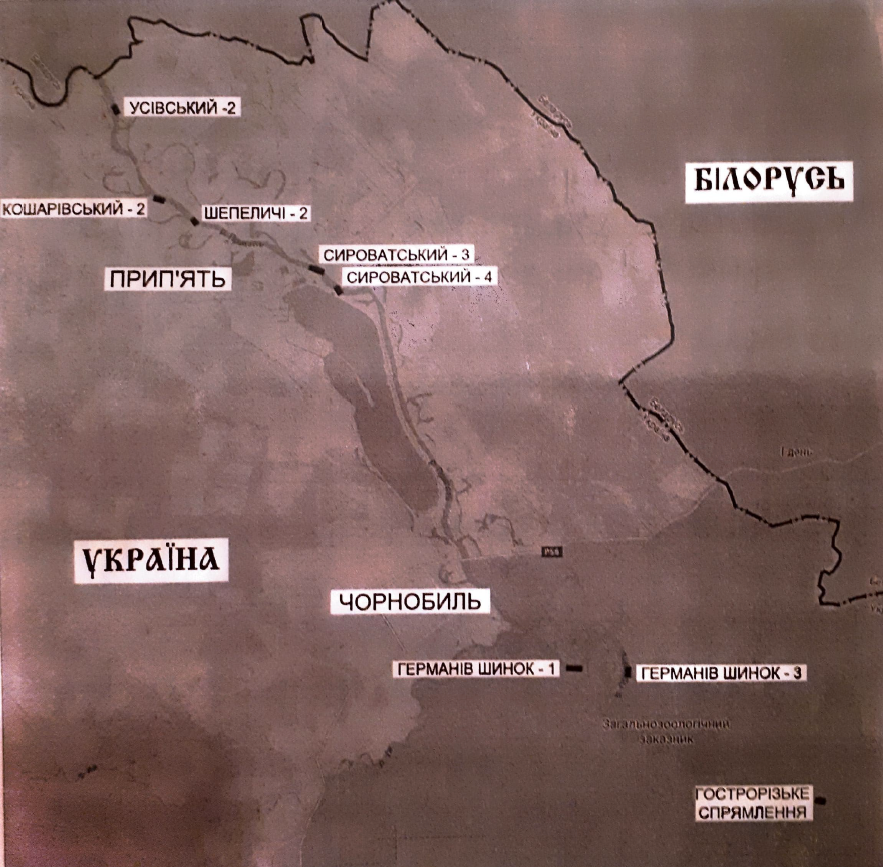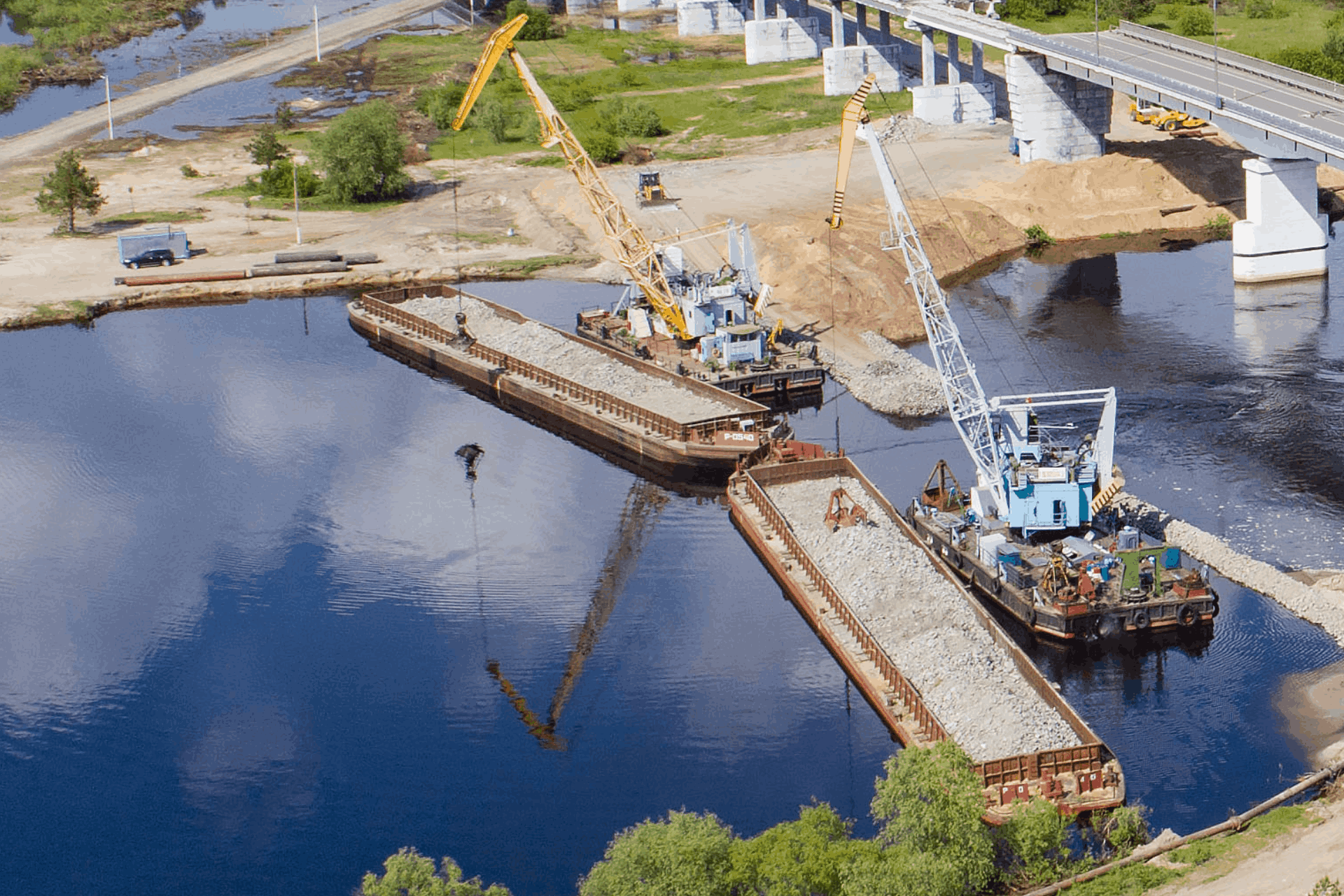28 million people could be exposed to increased radiation risk if dredging proceeds
The limited liability company ‘SOBI’ proudly announced that they started to dredge the Pripyat river as part of the construction of the E40 waterway. The works take place within the Chernobyl exclusion zone – the most contaminated area of the world – and are commissioned by the Ukrainian government.
Dredging is currently underway at two sites (Kosharivsky -2 (Кошарівський -2) and Shepelychi – 2 (Шепеличі – 2)) in close proximity to the Chernobyl power plant. To make the Pripyat navigable, it would need to be 1.60 m deep and 35 m wide. Several vessels are involved to dredge a total of 100 thousand cubic meters of soil. The dredging on all sites is expected to cost almost 12 million UAH (around 410,000 EUR).
The planned dredging sites for 2020 are shown in this map from the Ministry of Infrastructure:

Dredging puts human health at risk
All planned dredging sites lie within the Chernobyl exclusion zone. Since the nuclear disaster in 1986, the whole area is heavily contaminated. A radioactivity analysis from the French non-governmental organization “Association pour le Contrôle de la Radioactivité dans l’Ouest” (ACRO) reveals that dredging within this zone could pose an increased radiation risk for 28 million people. Eight million people are directly drinking the water from the Dnieper river, which could be contaminated as it is fed by the Pripyat. And around 20 million people eat food irrigated with the same water.
NGOs and scientists across the globe against dredging
Not only the six international Save Polesia partners, but also other organizations such as “Environment-People-Law” and ACRO support that dredging works should not be conducted within the Chernobyl exclusion zone.
The director of the Institute of Hydrobiology of the National Academy of Sciences of Ukraine, Serhiy Afanasyev, stated on a press conference of the National Ecological Centre of Ukraine (NECU) on the consequences of deepening the Pripyat in the Chernobyl Exclusion zone: ‘Any activity to deepen the river in one way or another will lead to contamination of river waters with radionuclides.’ He added that nobody knows neither the location and the quantity of radionuclides in the Pripyat nor the impacts during dredging works, because no related research exists.
Against national law
The public in Ukraine was not properly and transparently informed about the E40 waterway project. And only a few specialists were allowed to comment on the project on the basis of incomplete project information.
Moreover, an Environmental Impact Assessment for the E40 waterway project in Ukraine has not been conducted, even though this is a legal requirement as laid down in the national Water Code and the Environmental Impact Assessment Law. NECU submitted a case about the illegal activities related to the dredging works on the Prypiat river to court. But so far, the court of the first instance denied this claim and has not ruled to suspend the dredging. As a consequence, NECU filed complaints with the relevant court as well as to the prosecutor’s office about the illegality of the work carried out by the company SOBI.
* Photo shows construction works on the Pripyat river (Daniel Rosengren / FZS)
Further information:
• Read more on the increased radiation risk
• Article “Ukrainian state agency permits river dredging in the Chernobyl Exclusion Zone”
• Learn more about the threat from the E40 waterway
• GreenPost article ‘Dangerous works in the Chornobyl zone are covered up in the name of the president’
• Why it is crucial to save Polesia


